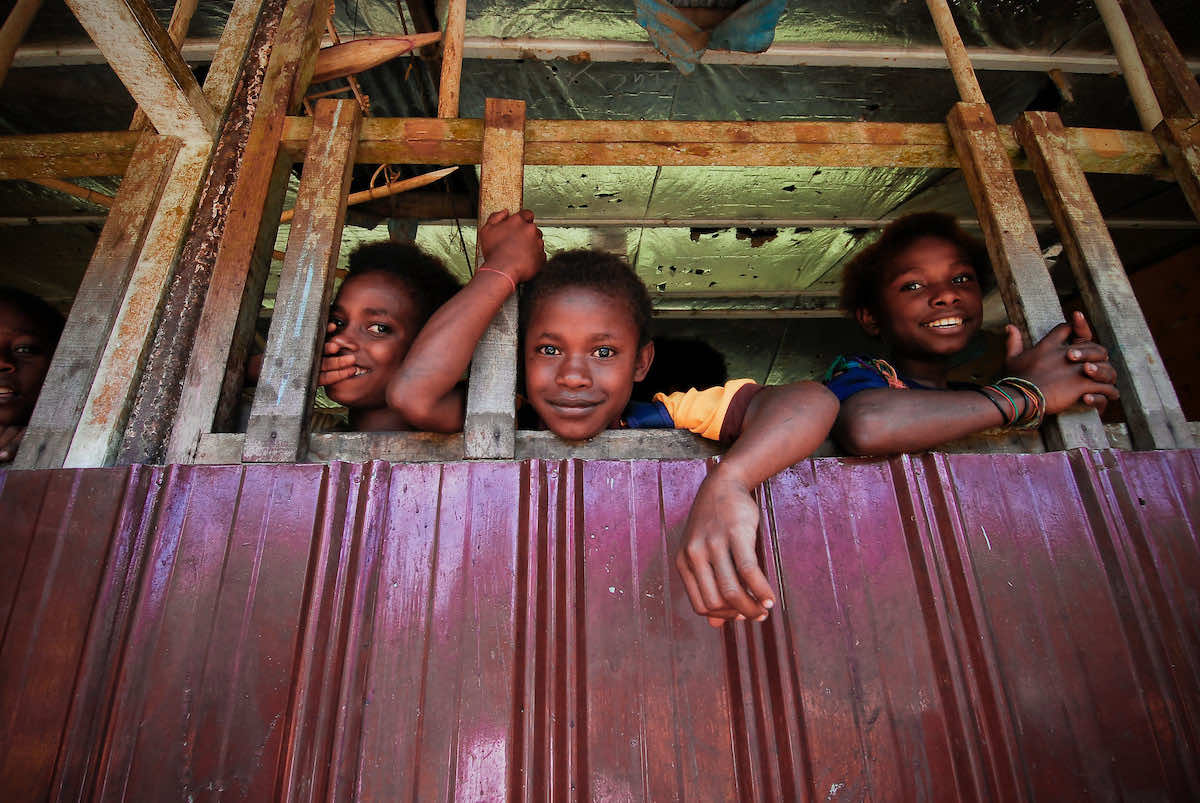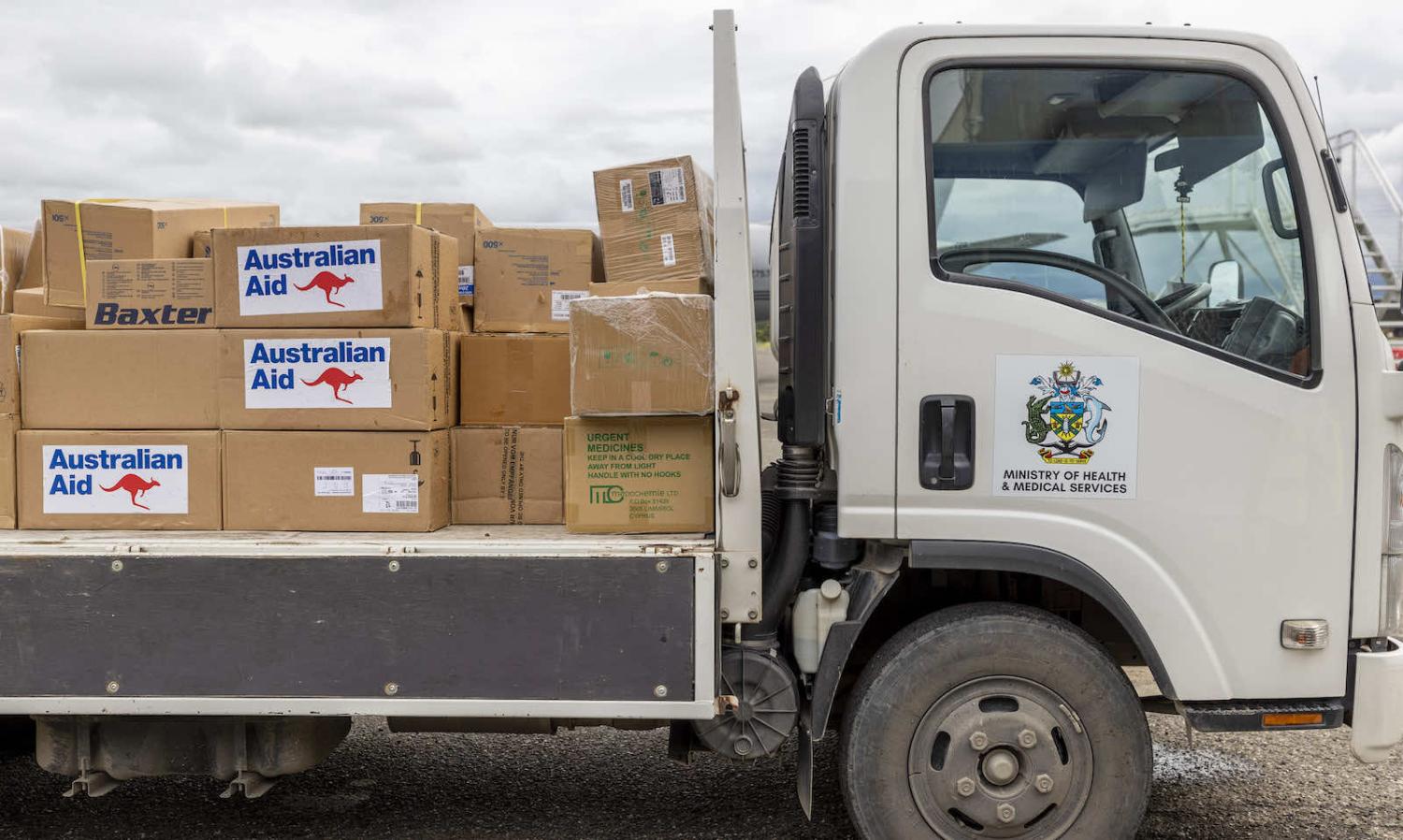Back to the future
The Morrison government gave the development aid sector an unexpected surprise with a budget spending increase mostly in the Pacific, just as the latest crisis in Solomon Islands was occurring. There is still plenty of grumbling that this – perhaps parting gift given the imminent election – was again done as a “temporary and targeted” measure and so probably doesn’t stop the trend decline in aid spending as a share of GDP under this government.
And with defence spending now running at about 12 times the aid budget, there is certainly no overall change in international relations spending priorities. That was underlined by the way defence and cyber security spending got lauded in the election-oriented budget speech, but the unexpected new aid spending was ignored.
The debate about whether the increased aid is really temporary or not will have to wait for a new government’s budget. And the signals from the Labor opposition are mixed.
Even when Australia Inc does get into a bidding war with China, it seems things can go astray.
But it did tend to overshadow the more significant structural trends in aid spending amid the bigger debate about how to deal with the Solomons’ China engagement. These involve the continued rise of loans in the development mix via Export Finance Australia (EFA) and the associated Australian Infrastructure Finance Facility for the Pacific (AIFFP); the shift back to direct budget cash injections to recipient countries from project aid; and the increased role of the Pacific worker programs.
The doubling of the AIFFP lending ceiling to $3 billion only underlines how this Australian alternative to China’s Belt and Road Initiative has become a key part of economic diplomacy. As noted here previously, EFA now oversees about five times as much in the new strategic funds than it does in its old core export insurance function.
With interest rates so low this is a pragmatic aid strategy and a new report (detailed below) touches on the idea of Australia putting its much stronger credit rating behind even more sovereign debt fund raising for the pandemic ravaged Pacific economies. But the enlarged AIFFP seems to be caught between muscling up to the China challenge with its new funds and not overloading borrower countries with unsustainable debt as China is accused of doing. The budget’s contingent risk section reveals that only $52 million of its original $1.5 billion established three years ago had actually been drawn down at the end of February.
That is likely to pick up with the budget revealing yet another transport project in Papua New Guinea on top of the port projects announced earlier in the year. And it is sensible not to get into a spending war with China.

But ironically even when Australia Inc does get into a bidding war with China, it seems things can go astray. PNG’s new super tax on Digicel Pacific could unsettle the Telstra bid, with generous AIFFP backing, to stop a Chinese company buying the regional mobile phone company.
The movement away from project-based aid to more traditional cash budget support detailed in the Development Policy Centre’s aid budget analysis is also a pragmatic response to extraordinary times. Australia needed to get its “temporary and targeted” pandemic aid out the door where it was needed and most regional countries faced ballooning budget deficits due to the economic slump.
But on top of the emergency budget loans to PNG over the past two years, this marks a sea change in the shift to project-based aid which was meant to be more transparent, easier to benchmark and less prone to waste. Indeed, as noted here previously, when the Morrison government returned to PNG cash aid two years ago former foreign minister Alexander Downer declared that ending this approach in favour of individual projects had been one of his achievements. “I didn’t want to see any cash paid into the Papua New Guinea budget,” Downer wrote in his Australian Financial Review column.
Between pandemic desperation, competition with China, the need for strategic flexibility over challenges such as the Solomons and the new mantra of aid partnerships, budget cash payments may be making a permanent comeback.
Work in progress
The formal expansion of the Pacific labour program was announced after the budget and its $13.6 million administrative funding is negligible in a budget of $1.5 billion in regular aid and more than $300 million in temporary money for Timor Leste and the Pacific. But the labour program spending allocation is up by more than a third underlining the growing importance of this non-cash development assistance approach in an era of tight Australian budgets, strategic competition and the need to win domestic support for aid spending.
It says a lot about how much is now riding on the successful implementation of the expanded labour program, with its family support and training additions, that it is really the core of a new report on strengthening Australia’s relationships in the Pacific.
The report from the parliament’s Joint Standing Committee on Foreign Affairs, Defence and Trade was overshadowed by the surprise aid spending increase and the Solomons crisis as parliament shutdown last week ahead of the election.
Regional countries have done much better protecting their fishing resources in a vast ocean via a form of compact in which Australia has played a big role than they have done managing their forest resources more individually.
Combined with parallel earlier committee reports on trade and defence ties since the Pacific Step-up was established, it provides the essential building blocks for moving from those short term news events to a more sustainable longer term relationship.
And while the committee treads delicately around the issue in its recommendations, the underlying thread in the report is the need for careful progress towards a new formal and different relationship with at least some Pacific nations. Committee member Dave Sharma writes in his introduction:
The Committee heard several bold and ambitious proposals for strengthening Australia’s relationships with the Pacific, including for ‘deep integration’ and ‘compact of association’ arrangements. Some of these ideas may prove to be non-starters, for a range of reasons. Nonetheless the Report recommends that these ideas be further scoped and evaluated, and openly discussed, with a view to informing the long-term future of Australia’s relationships with the region.
The implicit need for a bigger public debate about this issue flows through the report from the discussion of large-scale population movement due to climate change, to the need to provide the same permanent work visas as the competing non-Pacific agriculture visa offers, to the idea of a formal Federal Court role in Pacific judicial systems.
But the issue takes on more urgency in the context of Australia lapsing back into providing cash support for some country budgets while at the same time possibly considering building yet more new infrastructure in the battle with China in the Solomons. The report points out that regional countries have done much better protecting their fishing resources in a vast ocean via a form of compact in which Australia has played a big role than they have done managing their forest resources more individually.
There are many pitfalls going down this path. But finding a prospective sector like the judicial system or a geographic group like the most climate endangered nations for some form of test project for a compact seems well worth trying.
Back on the China road
It may be exquisitely poor timed for the “who lost The Solomons” election campaign debate, but International Monetary Fund economists have produced a new study questioning the emerging conventional wisdom that Chinese aid is damaging developing countries.
It is a complex desk top exercise using meta-regression analysis to examine 416 examples from 15 pre-existing studies to try to remove various biases and sampling issues.
But its conclusions are quite relevant to the Solomons:
Beijing’s aid has had a positive impact on economic and social outcomes in recipient countries but an opposite effect on governance, albeit negligible in size. On average, we find no evidence that Beijing’s official assistance affected socio-economic stability in recipient countries, the inflow of aid from other donors, or citizens’ perceptions of China.
The study is an attempt to deal with the challenge of China becoming a major global aid donor with more than US$350 billion in official finance committed to developing countries between 2000 and 2014, but still being outside the rich country donor club – the Development Assistance Committee. That means it doesn’t publish comparable detailed country and project-level information.
The authors say their study is the first attempt at quantifying the impact of Chinese aid on recipient countries’ development outcomes “based on estimates obtained from rigorous identification strategies”.
But at a time when China appears to be cutting back its aid to the Pacific to let its business do more of the work, as Lowy’s Mihai Sora has noted, the study’s conclusion is striking: “Chinese official assistance has had some bearing on development outcomes in recipient countries, but its effect is heterogeneous and very small in size.”


